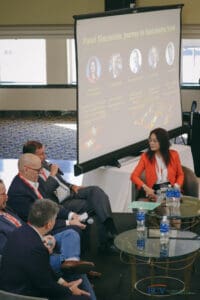 On October 28-29, CIVS Director Chenn Zhou presented a joint keynote at the North American Green Steel Summit in Detroit, MI. Dr. Zhou presented “Accelerating Energy Efficiency and Use of Hydrogen for the Green Transition of Steel Production”. Co-contributor to the presentation is Dr. Joachim von Schéele, Global Director Commercialization at Linde. Linde is a charter member in the Steel Manufacturing Simulation & Visualization Consortium (SMSVC) and also a team member for multiple DOE decarbonization projects led by CIVS.
On October 28-29, CIVS Director Chenn Zhou presented a joint keynote at the North American Green Steel Summit in Detroit, MI. Dr. Zhou presented “Accelerating Energy Efficiency and Use of Hydrogen for the Green Transition of Steel Production”. Co-contributor to the presentation is Dr. Joachim von Schéele, Global Director Commercialization at Linde. Linde is a charter member in the Steel Manufacturing Simulation & Visualization Consortium (SMSVC) and also a team member for multiple DOE decarbonization projects led by CIVS.
Dr. Zhou was also a panel moderator. The panel topic was “Journey to Sustainable Steel”. Panelists included Joachim Stolz, SVP of Operations, Outokumpu Stainless USA, LLC, Christopher Hessler, Environmental and Regulatory Affairs Manager, Gerdau Special Steel NA, Jamie Price, President of Ovako North America, Ovako Group, and Brian Kristofic, Director – Strategic Initiatives, BlueScope North America.
Various topics at the summit included:
- Shaping the Future of Green Steel in NA: Navigating the Regulatory Landscape and Addressing Talent Needs
- Green Hydrogen and Related Pathways for Decarbonizing Steel Industry
- Panel Discussion I: Renewables, Complementary Technologies, and Low Carbon Minerals to Supply a More Sustainable Steelmaking
- Panel Discussion II: Journey to Sustainable Steel
- Accelerating Energy Efficiency and Use of Hydrogen for the Green Transition of Steel Production
- From Molten Salt to Molten Steel: An Advanced Nuclear Solution for Carbon-Free Industry
- Panel Discussion III: Vision for a Carbon-Neutral Future
- “Do Better Things” – What We Can Do Now to Help in the Difficult Global Green Steel Transition
- Overview of the Iron and Steel Industry Transition to Green
- Green Steel Strategy and Circular Economy at Swiss Steel Group
- Processes Electrification & Digitalization – Pave the Way for Carbon Neutrality of Steel
- Panel Discussion IV: Steel Emissions Reduction from the Angle of Use End
Over 100 industry leaders from North America were in attendance. The NAGSS brought together professionals from the iron and steel industry as well as other relevant stakeholders to discuss the situation and trends of green steel development in the NA region, and to delve into the latest achievements in steel carbon reduction.
Key stakeholders across the green steel value chain who engage to drive innovation, collaboration, and actionable solutions for green steel and keep themselves stay ahead of industry trends and emerging technologies that will redefine the future of steel.
Summit background: Due to the increasing climate challenges faced by the world, the decarbonization has increasingly become a global consensus, and the green transformation of the steel industry has become the key to solve these bottleneck problems of environment, energy and resources, as steel production is accounting for 7% of total man-made greenhouse gas emissions. North America has been committed to decarbonization and it is happening at full speed. The region is currently with the lowest carbon emissions from steel production in the world, as a result of the combination of economic, financial and technological factors. With the global decarbonization process accelerates, it is expected that the demand for green steel will continue to grow. In the future, green steel in North America will reflect its growth rate through specific indicators such as capacity expansion, market share, significant decline in carbon emissions, economic benefits and social influence. In order to achieve sustainable, rapid and high-quality development in the future, it needs to solve several problems such as technical economic development, energy infrastructure transformation, policy support, industrial chain coordination and environmental and social licensing.
The post CIVS Director Presents Joint Keynote at North American Green Steel Summit appeared first on Center for Innovation through Visualization and Simulation (CIVS).
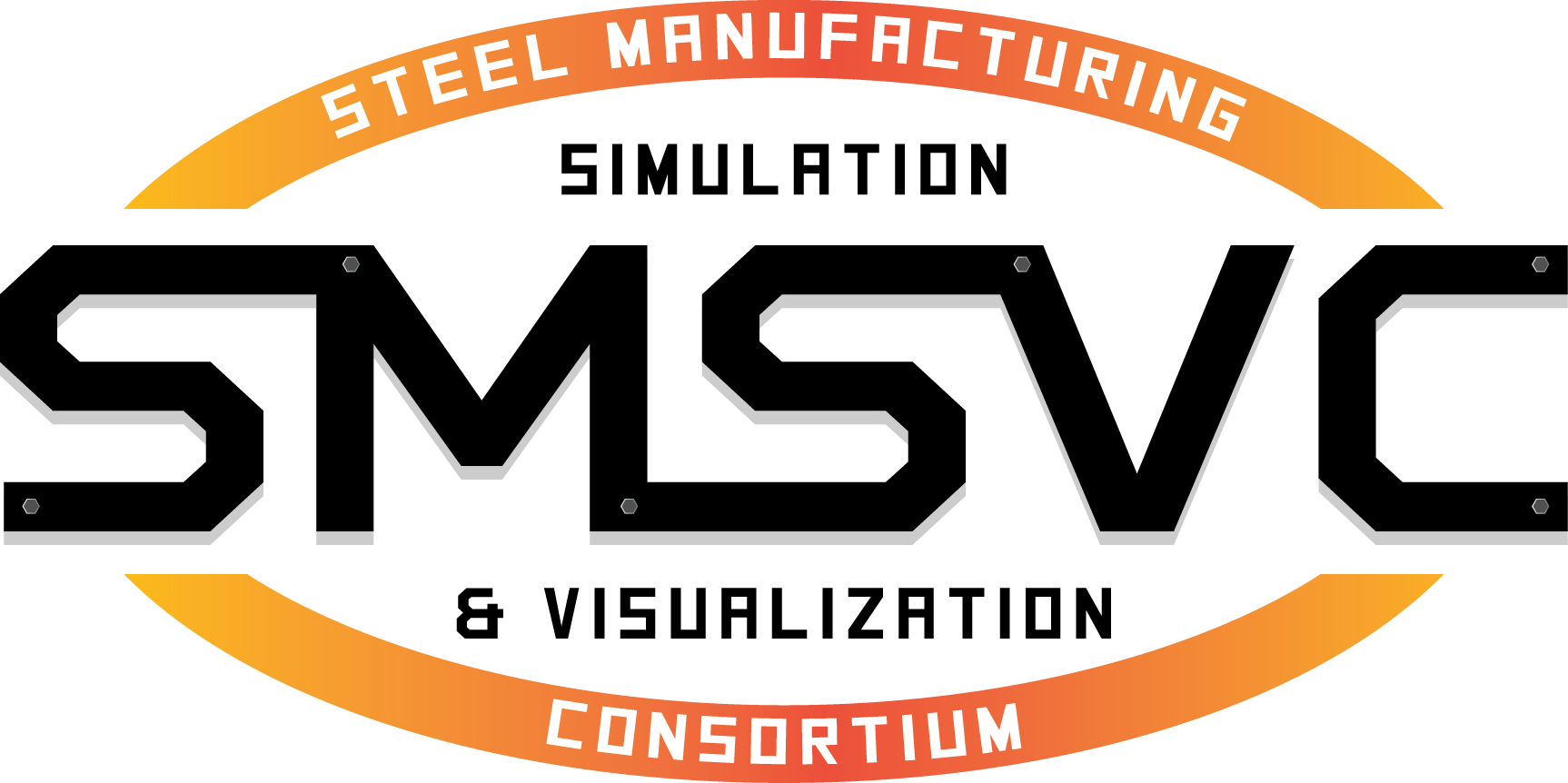
 Congratulations to CIVS Associate Director for Research, Dr. Tyamo Okosun, for being recognized at the
Congratulations to CIVS Associate Director for Research, Dr. Tyamo Okosun, for being recognized at the 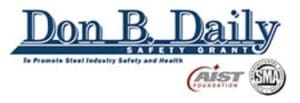
 On October 28-29, CIVS Director Chenn Zhou presented a joint keynote at the North American Green Steel Summit in Detroit, MI. Dr. Zhou presented “Accelerating Energy Efficiency and Use of Hydrogen for the Green Transition of Steel Production”. Co-contributor to the presentation is Dr. Joachim von Schéele, Global Director Commercialization at Linde. Linde is a charter member in the Steel Manufacturing Simulation & Visualization Consortium (
On October 28-29, CIVS Director Chenn Zhou presented a joint keynote at the North American Green Steel Summit in Detroit, MI. Dr. Zhou presented “Accelerating Energy Efficiency and Use of Hydrogen for the Green Transition of Steel Production”. Co-contributor to the presentation is Dr. Joachim von Schéele, Global Director Commercialization at Linde. Linde is a charter member in the Steel Manufacturing Simulation & Visualization Consortium (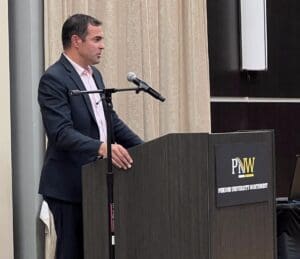 Neil Banwart, MachH2 Chief Integration Officer, was the keynote speaker at the SMSVC annual meeting dinner on November 6. His speech was an overview of the Midwest Alliance for Clean Hydrogen (MachH2).
Neil Banwart, MachH2 Chief Integration Officer, was the keynote speaker at the SMSVC annual meeting dinner on November 6. His speech was an overview of the Midwest Alliance for Clean Hydrogen (MachH2).
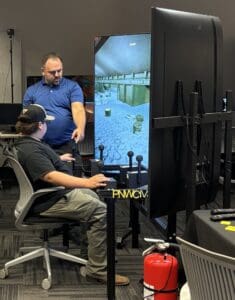 CIVS hosted multiple groups of students from area schools with teachers who participated in the 6-week NSF Research Experiences for Teachers (RET) program at CIVS this summer. Hobart Middle School visited on October 18, and Merrillville High School visited on November 19. During their visits, students learned about simulation, steel-related research and careers, and a variety of projects happening at CIVS. The students also talked with CIVS students and staff, participated in hands-on demonstrations like operating a virtual crane to move giant ladles of molten steel, and using a fire safety simulator. Other demonstrations included harvesting coral from an underwater nursery and learning about sharks in VR as part of NSF DREAMSTEM project being developed with College of the Florida Keys.
CIVS hosted multiple groups of students from area schools with teachers who participated in the 6-week NSF Research Experiences for Teachers (RET) program at CIVS this summer. Hobart Middle School visited on October 18, and Merrillville High School visited on November 19. During their visits, students learned about simulation, steel-related research and careers, and a variety of projects happening at CIVS. The students also talked with CIVS students and staff, participated in hands-on demonstrations like operating a virtual crane to move giant ladles of molten steel, and using a fire safety simulator. Other demonstrations included harvesting coral from an underwater nursery and learning about sharks in VR as part of NSF DREAMSTEM project being developed with College of the Florida Keys. On September 30-October 3, CIVS Senior Research Engineer Nicholas Walla attended and presented at the
On September 30-October 3, CIVS Senior Research Engineer Nicholas Walla attended and presented at the